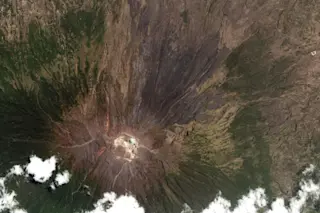A view of the crater at Agung on September 27, 2017. The increased steam and gas emissions can be seen on the right side of the crater. The dark scar on the slopes of the volcano come from a forest fire earlier in the month. Image by Planet Labs. We have likely entered the most dangerous period in the waiting game at Agung in Indonesia. It has been over 2 weeks since the volcano began to show signs of unrest and it has done very little other than shake and produce a small steam-and-gas plume. Upwards of 140,000 people have evacuated from the regions near the volcano and now all of them are watching and waiting for the volcano to do ... something. The longer the wait, the more likely people may reject the assessment of volcanologists that an eruption is going to happen and try to move back to ...
Patience Wearing Thin as Unrest Continues at Agung but No Eruption
Agung volcano unrest prompts evacuations near the volcano, raising concerns about safety and the impact on Bali tourism.
More on Discover
Stay Curious
SubscribeTo The Magazine
Save up to 40% off the cover price when you subscribe to Discover magazine.
Subscribe













